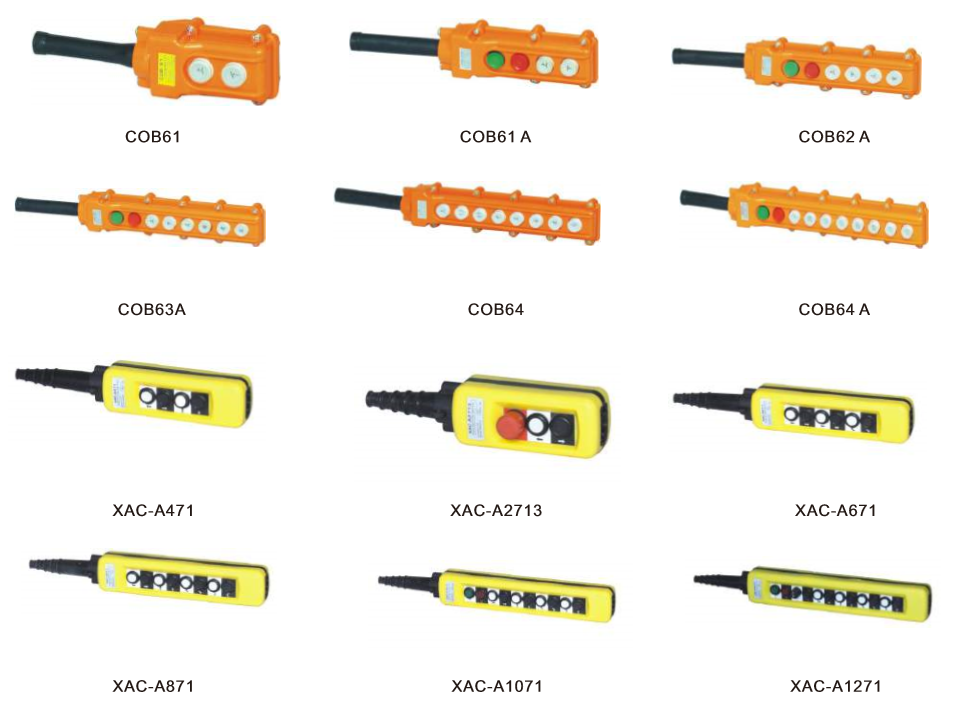Application of ceramic materials in LED lighting
LED is a new type of solid-state light source that has received great attention since its inception. Its luminescence mechanism is based on the electrons in the PN junction transitioning between the energy bands to generate light energy. Under the action of the external electric field, the radiation of electrons and holes recombines electrically, and part of the energy is converted into light energy. The lattice oscillation generated by the non-radiative recombination converts the remaining energy into heat energy.
Crane Control Station also called Rainproof Pushbutton Switches, is a newly developed products, which is beautiful , strong and light, reliable struction, advanced and big contact capacity; mechanical interlocking , and if necessary, it can achieve interock circuit to assure the more safety and reliable using . The products matched cable jacket and waterproof rubber sealing strip, have a good (IP65 level) performance of dust and rain. So it most suitable for the remote controll in outdoor, rainy and snowy, dusty and damp environment, such as electric hoist, open conveyor blt, building line etc.
Crane Control Station Crane Control Station,Crane Control Push Button Switch,Pendant Control Stations,Wireless Crane Control System Ningbo Bond Industrial Electric Co., Ltd. , https://www.bondelectro.com
At present, the luminous efficiency of LED is only 20%~30%, and most of the rest of the energy is converted into heat energy. A large amount of heat energy needs to be emitted in time, otherwise the life of the LED will be reduced or even permanently disabled. Therefore, while LEDs are developing rapidly, people are constantly conducting research on new technologies for LED heat dissipation .
Metallic aluminum has always occupied the market of LED lighting main materials due to its small density, high thermal conductivity and mature surface treatment technology. With the improvement of people's safety performance requirements, the electrical conductivity of aluminum has become a fatal scar. In order to improve the safety of LED lighting fixtures (hereinafter referred to as LED lamps), electrical insulation materials have attracted people's attention.
The electrical insulation materials that have begun to emerge are ceramic materials and high thermal conductivity plastics. The use of ceramic materials by humans has been used for thousands of years. The ceramic materials prepared by modern technology have the characteristics of good insulation, high thermal conductivity, large infrared radiation rate and low expansion coefficient, which can become a new material for LED lighting. At present, ceramic materials are mainly used for heat sink materials, circuit substrate materials and lamp heat sink materials for LED package chips. High thermal conductivity plastics have entered the heat dissipation material market with high electrical conductivity and low density value. At present, due to high price, the application rate is not large. This paper mainly discusses the application technology of ceramic materials in LED lighting.
Heat transfer mechanism of ceramic materials
Ceramics are non-metallic materials with no free electrons in the crystal structure and excellent insulation properties. Its heat transfer belongs to the phonon heat conduction mechanism. When the crystal lattice is intact and free of defects, the larger the mean free path of the phonon, the higher the thermal conductivity. The theory shows that the maximum thermal conductivity of ceramic crystal materials can be as high as 320W/mK.
It is generally believed that structural defects are the main influencing factors among many factors affecting the thermal conductivity of ceramic materials. During the sintering process, oxygen impurities enter the ceramic lattice, accompanied by structural defects such as vacancies, dislocations, and anti-phase boundaries, which significantly reduce the mean free path of the phonons, resulting in a decrease in thermal conductivity. Modern ceramic technology fixes oxygen to the grain boundary by forming a second phase, which reduces the possibility of oxygen impurities entering the crystal lattice. As the oxygen concentration at the grain boundary is greatly reduced, the oxygen inside the grain spontaneously diffuses to the grain boundary. The oxygen content inside the crystal matrix is ​​reduced, and the number and type of defects are reduced, thereby reducing the probability of phonon scattering and increasing the mean free path of the phonons. Due to the different preparation techniques, the thermal conductivity of ceramic materials is also different.
The lamp type is GU10, the external dimension is 49.5mm×50mm, the fin radiator and the lamp holder are made of 95 ceramic materials and are connected by screws.
The fixture is equipped with three Handson LED light sources, built-in constant current drive power, total power consumption of about 3.55W, lens distribution, total luminous flux of about 150lm. 